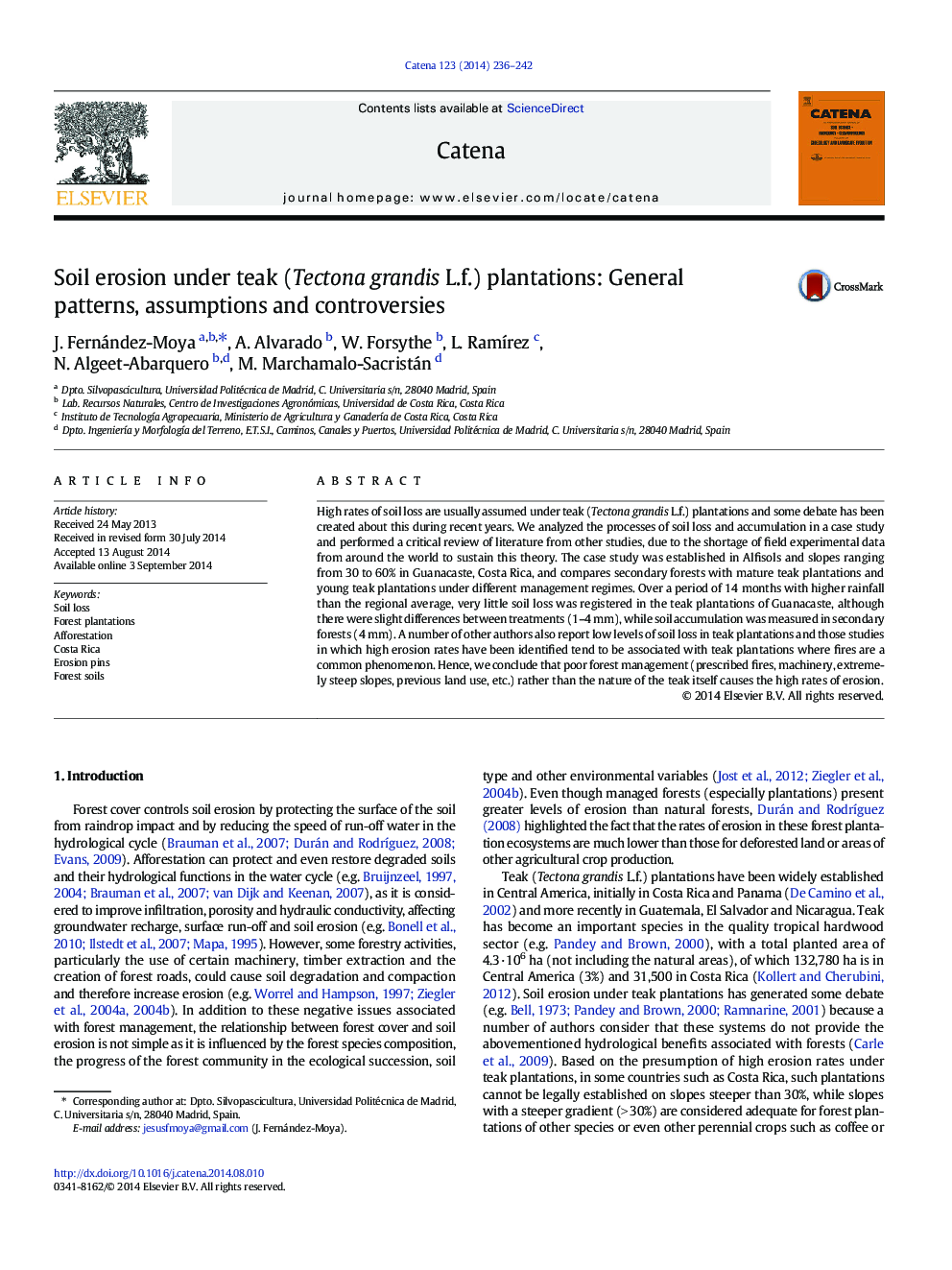| Article ID | Journal | Published Year | Pages | File Type |
|---|---|---|---|---|
| 4571359 | CATENA | 2014 | 7 Pages |
•The common myth of high soil erosion rates in teak plantations is refuted.•The myth is not based on experimental/field data.•Moderate or low erosion rates are usually found in teak plantations.•Prescribed fires in some plantations have probably caused the false myth.•Teak is not an erosive species itself.
High rates of soil loss are usually assumed under teak (Tectona grandis L.f.) plantations and some debate has been created about this during recent years. We analyzed the processes of soil loss and accumulation in a case study and performed a critical review of literature from other studies, due to the shortage of field experimental data from around the world to sustain this theory. The case study was established in Alfisols and slopes ranging from 30 to 60% in Guanacaste, Costa Rica, and compares secondary forests with mature teak plantations and young teak plantations under different management regimes. Over a period of 14 months with higher rainfall than the regional average, very little soil loss was registered in the teak plantations of Guanacaste, although there were slight differences between treatments (1–4 mm), while soil accumulation was measured in secondary forests (4 mm). A number of other authors also report low levels of soil loss in teak plantations and those studies in which high erosion rates have been identified tend to be associated with teak plantations where fires are a common phenomenon. Hence, we conclude that poor forest management (prescribed fires, machinery, extremely steep slopes, previous land use, etc.) rather than the nature of the teak itself causes the high rates of erosion.
